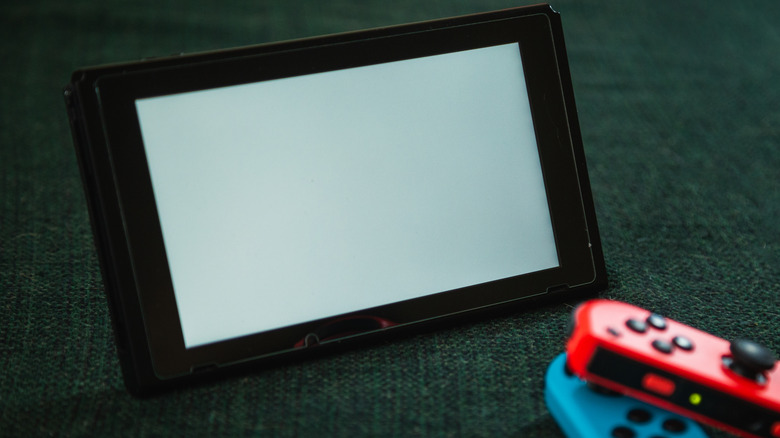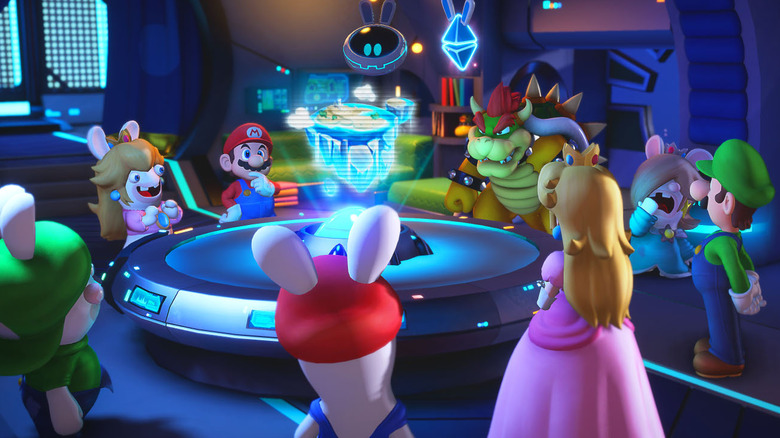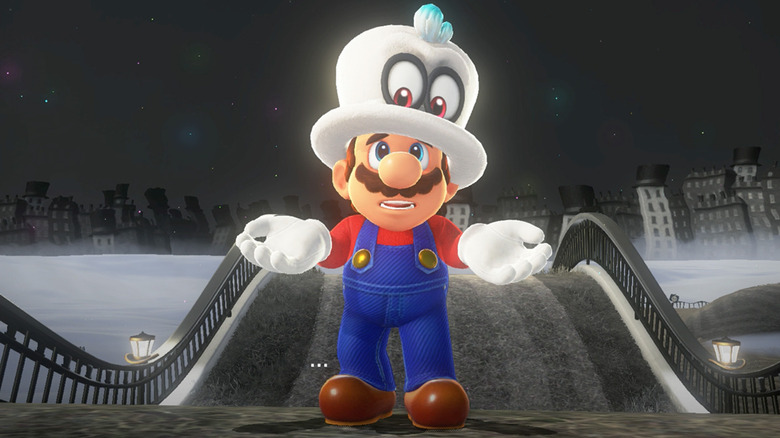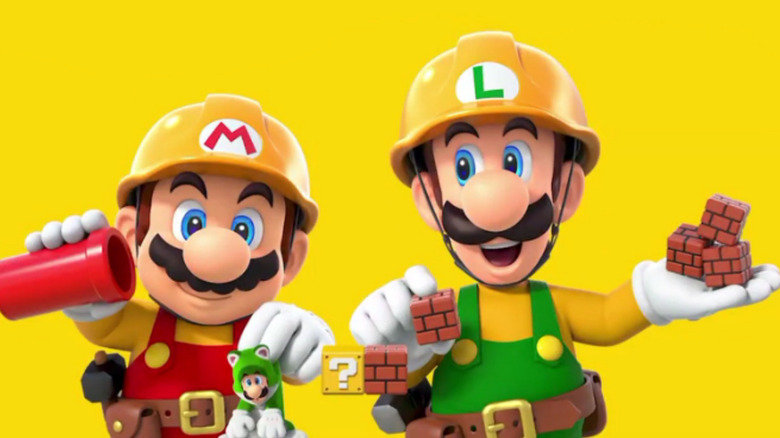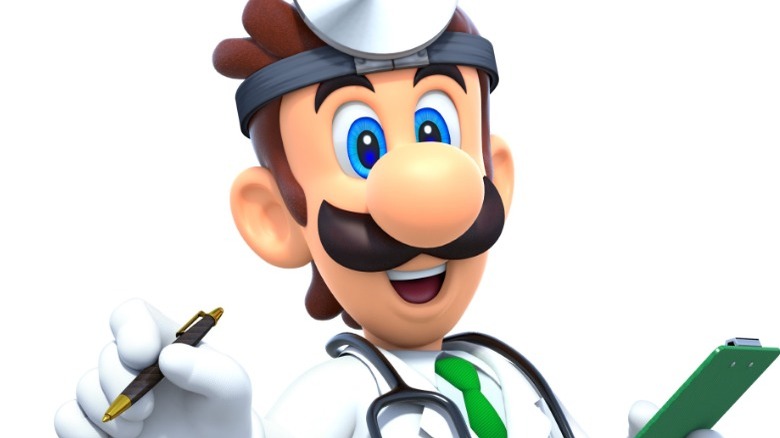How To Fix The Nintendo Switch 'Blue Screen Of Death
The Nintendo Switch is a solid piece of hardware, but every console has a few kinks. Unfortunately, some users have discovered an issue where their Switch suddenly displays a solid-colored screen. This phenomenon has become known as the 'blue screen of death,' though there are reports that it can also be orange, white, or any other solid color. Players will be completely unable to access the home menu, start their applications, or interact with the Switch in any way when this happens. Getting the 'blue screen of death' is incredibly frustrating. It makes the console's best games unplayable and makes gamers feel powerless since there isn't even an error code to look up and see what went wrong.
There's no need to panic just yet, though. While there may be some internal damage to the console, gamers can do a handful of things that might just bring their Switch back to full functionality — if the cause is software related. Here are some things to try that might fix the blue screen of death.
Step 1: Update the Switch's software
Nintendo's customer support recommends that the first thing Switch owners do in the event of a blue screen of death is restart the console and then update the system software. There are a few reasons why this might solve the problem. The Switch may be currently running on an older operating system version, which might not be compatible with the software from newer games and apps. It's also possible that the last update was corrupted somehow, and a recent update could replace this software with an iteration free of the issue.
To update the system software, hold the power button for at least 12 seconds to force the console to shut down. Then press the button again to start it back up. Assuming the Switch manages to reach the Home screen, ensure that the console is connected to the internet, and then go to the System Settings and navigate to the System menu. There should be a System Update option at the top of the screen. Select this and make sure the console has the latest version of the software downloaded.
Step 2: Hard reset the Switch
Giving the Switch a hard power reset is probably the user's best bet if the software update didn't work or the user can't even get to the Home screen to attempt it. Performing a hard reset gives the system a reboot, cleaning the slate to start fresh. In addition, this allows it to cease any troublesome processes interfering with the console's ability to function correctly. The practice is most commonly used when people are having trouble getting their Switch to turn on, but it's a quick and easy process, so it's worth giving a shot any time there might be a bug keeping the system from doing its job.
To perform the hard reset, start by ensuring the system is powered off. Then hold the power button for 20 seconds. Once that's done, press the power button to turn the system back on. With luck, the user should be able to get to the home screen without the 'blue screen of death' getting in the way. This method also works on the Switch Lite and other versions of the console. Users who could not check if their system software was up to date before should do so now.
Step 3: Try Maintenance Mode
There are a couple more things users can try if the first two steps don't do the job, and both of them involve restarting the Switch in Maintenance Mode. This is sort of like the safe mode used by computers. It allows the user to access an alternative, more limited version of the Switch's operating software to make some repairs. Begin by making sure that the Switch is turned off. Then press and hold the volume up and down buttons, and then press the power button. Keep the volume buttons depressed until the Maintenance Mode menu pops up. The user should now be able to select an option labeled 'Update System.'
It's a bit of a Hail Mary, but it's also possible that having overly full system storage is at fault. While rare, hard drive issues have been known to cause display errors from time to time (per Recoverit). The base Nintendo Switch only comes with 32 GB of internal storage. This can fill up quite quickly and cause issues for the console when it no longer has space for recording updates or other vital processes. If the user finds that their storage is full, it might be worth starting the console in Maintenance Mode and then selecting Initialize Console Without Deleting Save Data. This will keep all the user's saved data, screenshots, and user information, but it will delete games and apps from the console, freeing up the space for it to function correctly.
Step 4: Contact Nintendo
If none of the above steps worked, players will likely need to send it to Nintendo for repair. Fortunately, every new Nintendo Switch comes with a one-year limited warranty. During that period, Nintendo promises to "repair or replace the defective hardware product or component, free of charge," so long as issues were the result of a defect and not damage caused by the user or any third-party products that were not licensed for use with the Switch by Nintendo. This is the safest way to ensure that the console is repaired safely.
Even if the Switch is out of warranty, however, Nintendo may still perform repairs for a fee. Nintendo will also replace it with a Factory Certified System if Nintendo cannot repair the Switch. These systems "must meet functional new product specifications. They may be built with new housing, or may include minor cosmetic defects." All repaired and replaced systems then receive a new, 100-day repair warranty, just in case there are more issues down the line.
IFIXIT has guides for checking and repairing a CPU disconnect or replacing the motherboard, which could be the source of the problem. Both of these tasks require a high-experience level with computer repair and may require the soldering of components. It will also void any active warranties, and Nintendo may refuse to repair the console in the future.

